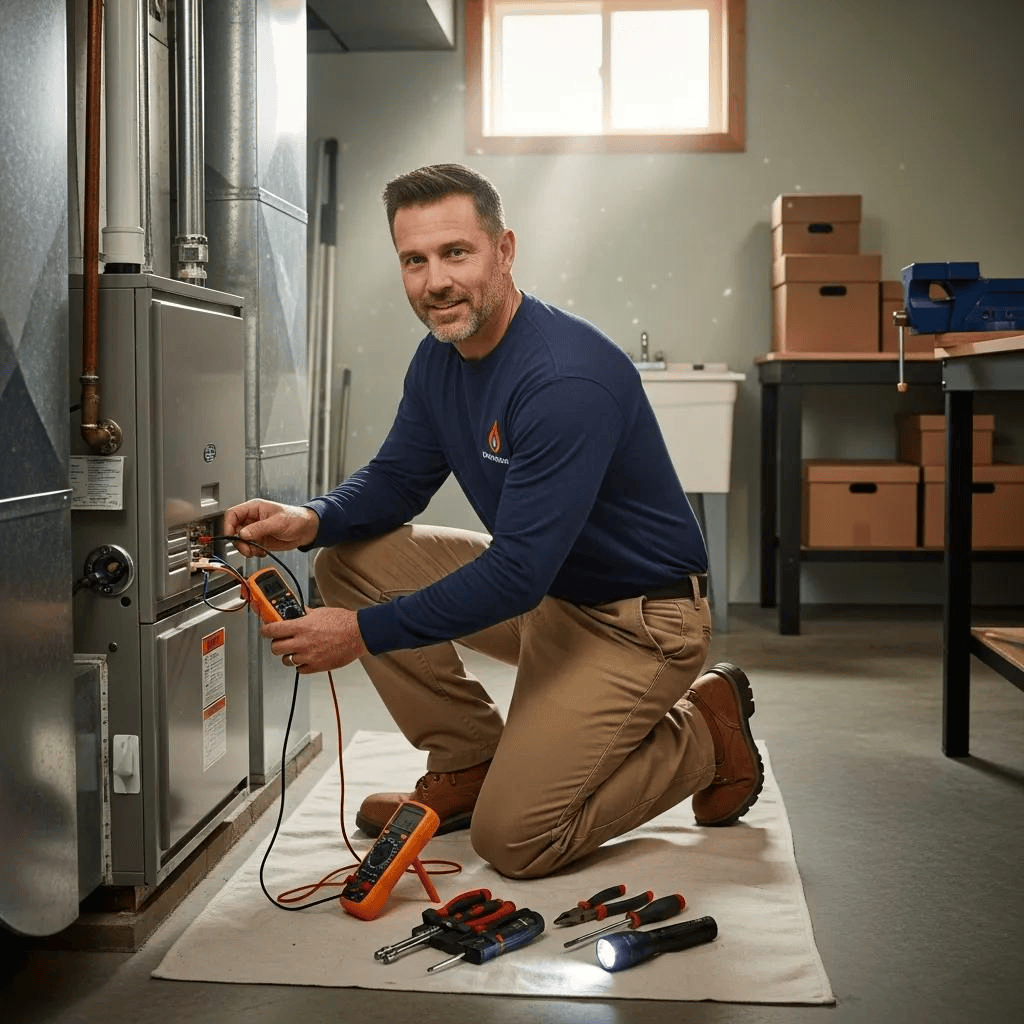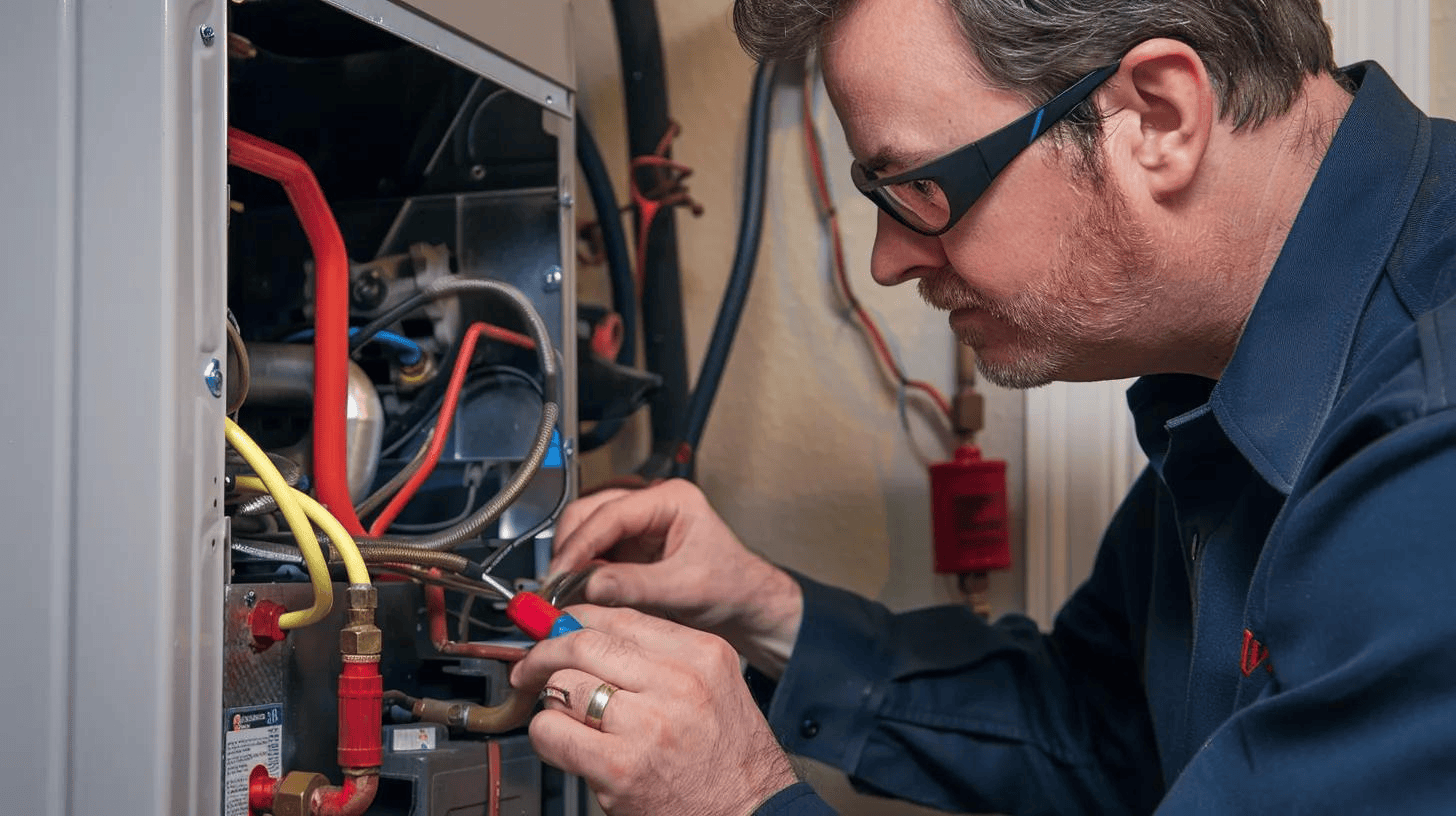
It’s a hot summer afternoon in Scottsdale, and your air conditioning won’t turn on. You check the thermostat again. Nothing. No cool air, no fan noise, just silence. When your AC unit suddenly stops working, it can be stressful, especially with rising indoor temperatures and no immediate relief in sight. This kind of issue is more than an inconvenience. It can make your home uncomfortable fast and push you to search for answers right away.
There are several things that can prevent your AC from starting up, and some of them are quick to troubleshoot. Simple problems like dead thermostat batteries or a flipped breaker might be the cause, but other cases may need a visit from trained professionals. Knowing how to check the basics before calling for help can save both time and frustration. Here are several steps to help you figure out why your AC might not be turning on and what action to take next.
Check the Thermostat Settings
Start with the thermostat. It’s easy to overlook this small device because it’s often just part of the wall. But if your system isn’t responding, settings or power issues here might be the reason.
Check these items first:
1. Make sure the thermostat is set to “cool.” It should be lower than your home’s current indoor temperature.
2. If it runs on batteries, pull off the cover and see if any warning signs are flashing or if the screen is blank.
3. Replace the batteries if you're unsure or if it's been a while since they were changed.
4. Double-check whether it’s in “auto” or “on” mode and try switching back and forth.
5. When using a programmable or smart thermostat, confirm the schedule isn’t set for a different time or temperature range.
Some residents in Scottsdale have unknowingly set their thermostats to “heat” mode after a brief cool weekend or power outage with no memory reset. A quick settings change is often all it takes to bring the system back online.
Assess the Power Supply
Once you're confident the thermostat is working as expected, it’s time to take a look at power supply issues. An AC unit won’t start if it’s not getting electricity in the first place.
Start by reviewing these power essentials:
1. Look at your home’s electrical panel to see if the circuit breaker connected to the AC has tripped. If it has, reset it once.
2. Check whether the outdoor unit is plugged in and appears secure.
3. Some systems have a separate on/off switch near the air handler. Make sure this switch hasn’t been turned off by mistake.
4. Check for a visible disconnect box next to your outside condenser. It may have a fuse that needs to be replaced if it's blown.
If your breaker trips again right after resetting, don’t keep forcing it. It could mean something needs professional repair. Electrical problems can be hazardous and should be handled by our technicians.
Looking into these basic checks helps determine whether the problem is minor or more serious. Catching simple issues like dead batteries or overlooked switches can get your AC back on with minimal delay. If the system still won’t start, the next step is to focus on airflow and internal safety features.
Inspect the Air Filters
If your thermostat is working and the AC has power, check your air filters next. Many Scottsdale homeowners don't think about their filters until things stop working. A clogged filter blocks airflow and can even prevent your unit from turning on. Modern systems often shut down automatically if airflow issues threaten motor strain. This safety feature can be frustrating when it happens without warning.
Here’s how to check and handle your air filter:
1. Locate your air return vent or filter slot. This is usually near the indoor AC unit or inside a hallway ceiling or wall grille.
2. Slide the filter out and hold it up to the light. If you can’t see any light coming through, it’s time for a replacement.
3. Make sure you know the correct size for your system. This is typically printed on the edge of the filter.
4. Install the new filter with the arrow pointing in the direction of airflow, usually toward the air handler.
Changing filters every couple of months during the hottest seasons is a good habit, especially when the system runs almost daily. If you have pets, there’s a lot of dust, or nearby construction, filters may need to be changed even more often. Clean filters improve AC performance and help reduce the chance of shutdowns.
Examine the Condensate Drain Line
Most people never think about it, but your air conditioner pulls moisture out of the air. That moisture runs through a drain line, often located near your indoor AC unit. Scottsdale’s warm summer air tends to hold more humidity, especially during monsoon season. Over time, algae, dust, or debris can build up and block this line. Modern systems are designed to shut the unit down when a full or clogged drain line triggers the safety switch. That prevents water damage but may leave your system unresponsive.
To spot drain problems:
1. Look for standing water near your interior unit or near the drain line exit outside.
2. Check for water leaking around the unit or signs of rust in the drip pan.
3. If accessible, inspect the drain tubing for visible clogs or slow drip rates.
If you’re comfortable doing so, a gentle flush using a small amount of warm water can help clear a minor backup. If the water doesn't drain easily or you’re unsure where the blockage is, our technicians should inspect the entire system. Drain problems may also indicate deeper issues inside the evaporator coil or condensate pan.
When It's Time to Call
If you’ve worked through all these steps and your AC still won’t turn on, it’s time to contact our professionals. The issue might involve internal parts like the capacitor, compressor, or control board. These components are not visible or safe to troubleshoot on your own. Our technicians have the tools and training to locate the exact cause without causing additional damage.
Avoid forcing resets or continuing to flip the breaker, as doing so could make the situation worse. Overloading the system, causing short cycles, or damaging major components may extend the time and cost needed for repairs. It's more effective to stop and seek expert help.
Keep Your Home Comfortable All Summer
An AC that won’t start during a Scottsdale summer can disrupt your day and create uncomfortable indoor conditions. Whether the cause is a clogged filter or something more complex, knowing what to check early can help you solve the issue faster. Prompt action keeps your system from developing bigger problems and helps restore comfortable temperatures quickly.
Staying cool through the summer heat means acting when your system shows signs of trouble. If your unit refuses to turn on, checking the thermostat, power, filters, and drain line gets you on the right path. If these basics don’t fix the issue, our technicians are ready to help you get back to a properly working cooling system. Taking these steps puts you closer to a solution and ensures your home stays cool when it matters most.
If you are still experiencing issues after checking your thermostat, power supply, air filters, and condensate drain line, professional help can make a difference. At LJ Refrigeration Co., our professionals can diagnose and repair any underlying problems quickly. For reliable AC repair in Scottsdale that gets your system back to normal operation, please contact us today for a quick estimate or to schedule a service.
Customer Testimonials
Hear directly from our customers about the quality, honesty, and care we bring to every job.



Short Heading Goes Here









